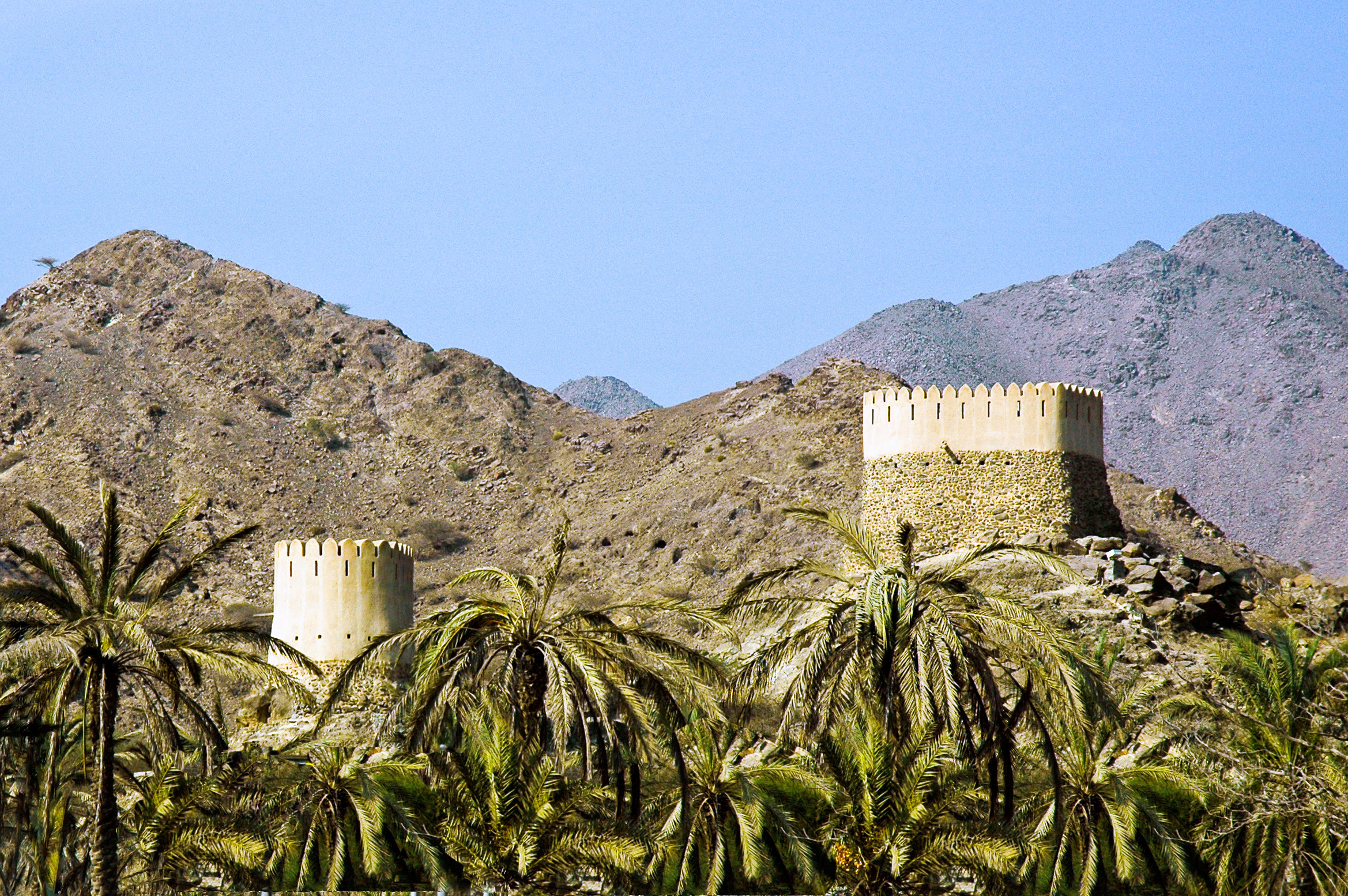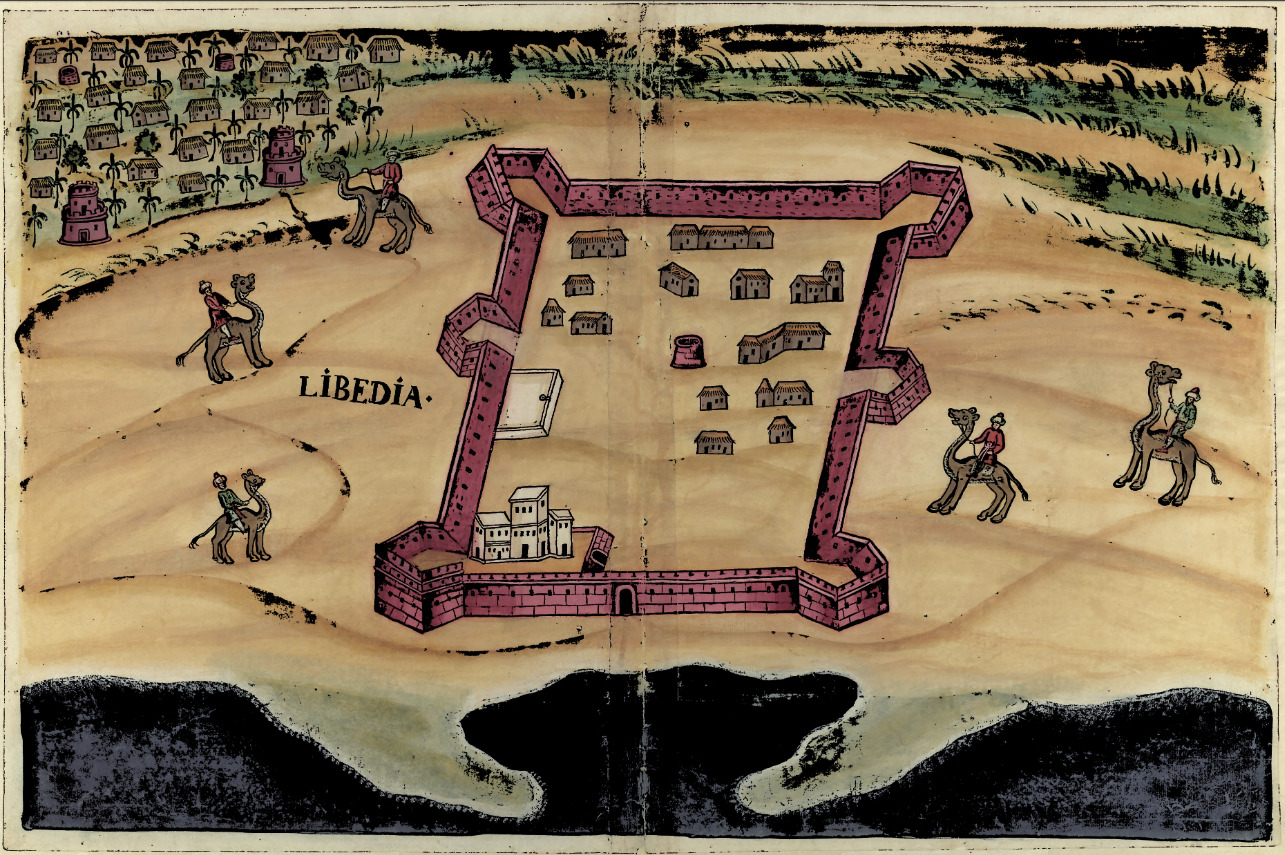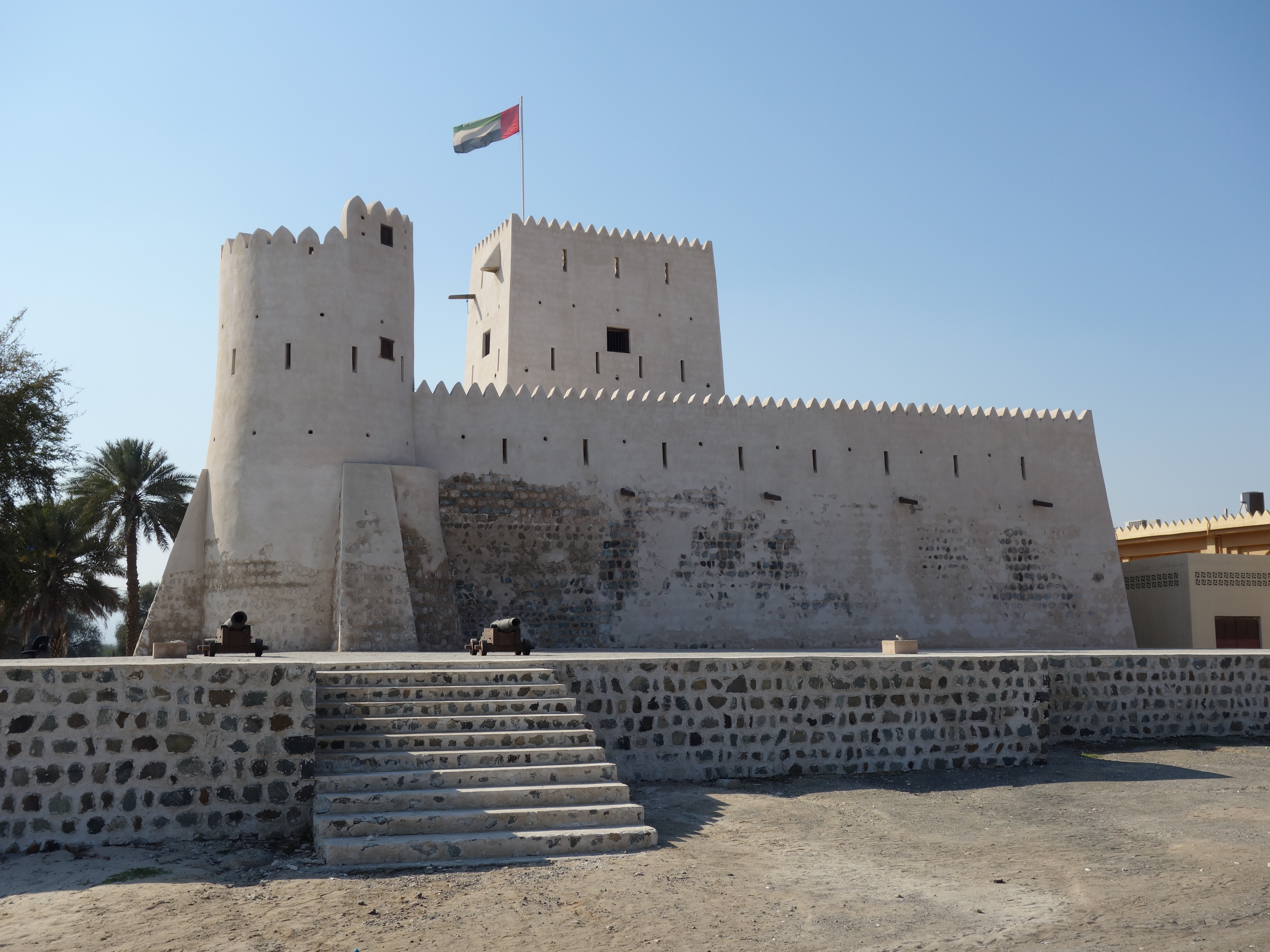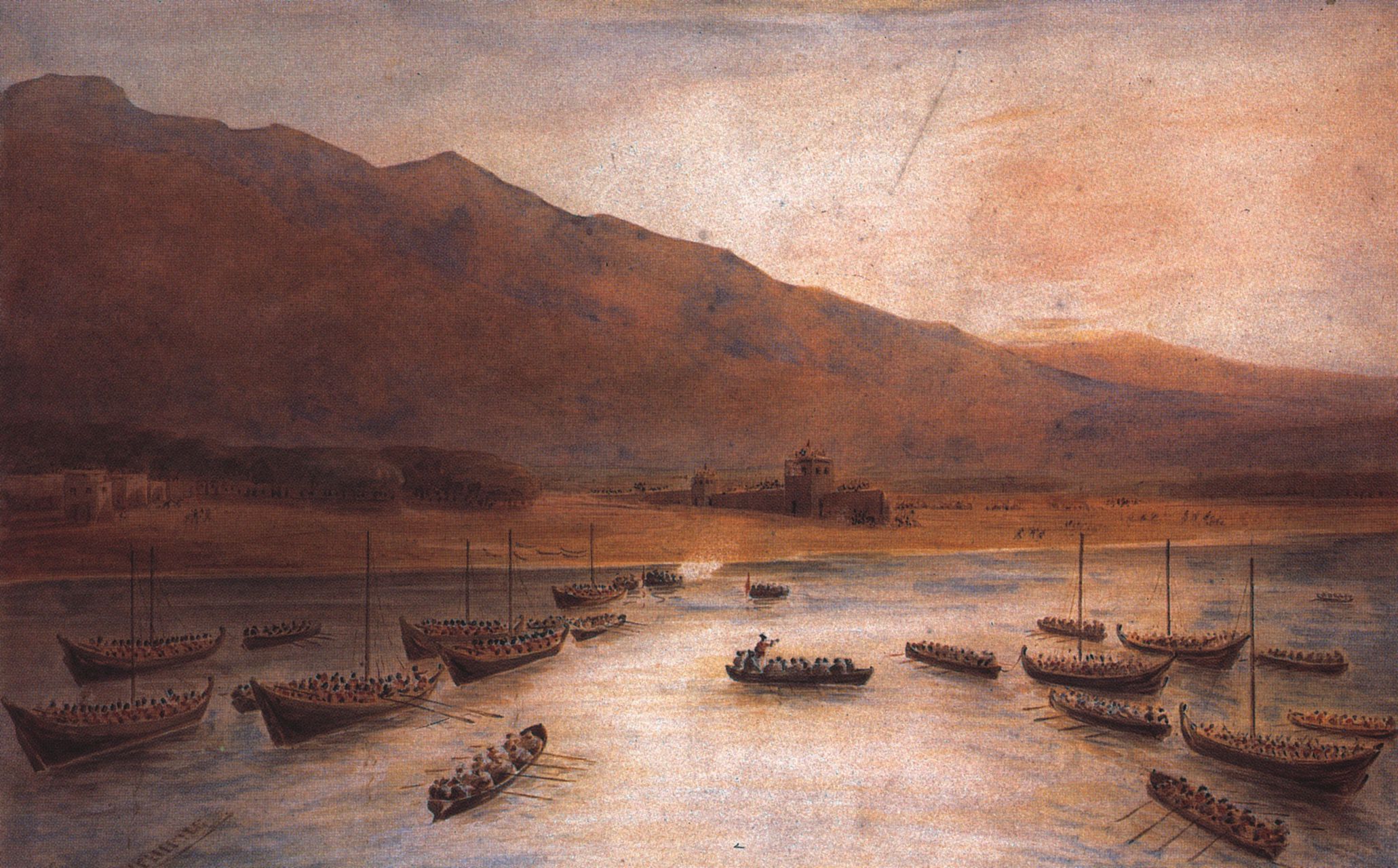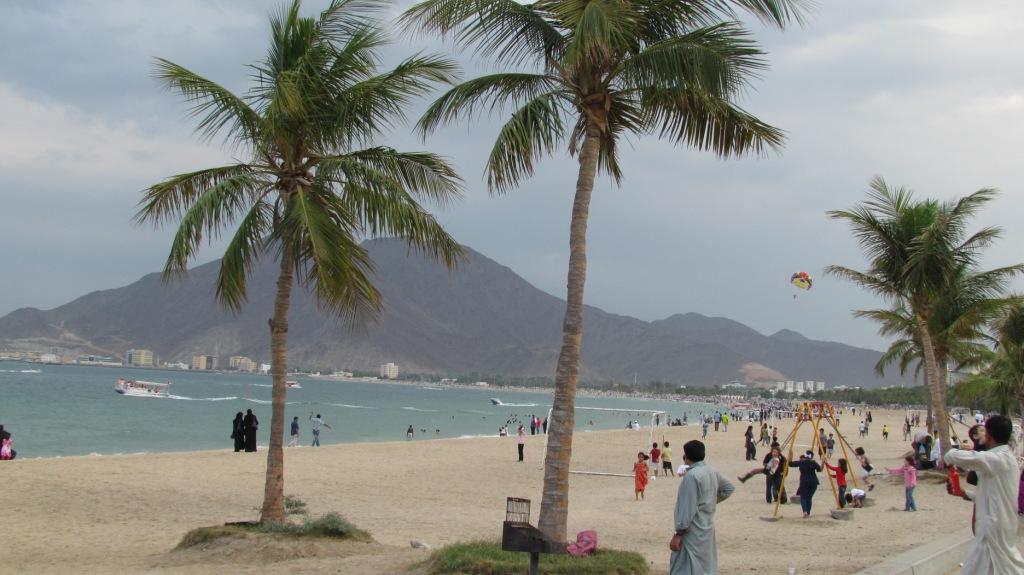|
Emirate Of Fujairah
The Emirate of Fujairah ( ' ) is one of the Emirates of the United Arab Emirates, seven emirates that make up the United Arab Emirates, the only one of the seven with a coastline solely on the Gulf of Oman and none on the Persian Gulf. Its capital is Fujairah. History The Emirate of Fujairah, dominated by the ''Sharqiyin'' tribe, sits at the mouth of the important trade route, the ''Wadi Ham'' (which is guarded by the Sharqiyin Al Bithnah Fort), through the Shumayliyyah Mountains, mountains to the interior and the Persian Gulf Coast. Known as the ''Shamaliyah'', the east coast of what is now the UAE was subject to Sultanate of Muscat, Muscat until 1850, when it was annexed by ''Al Qasimi'' of Emirate of Sharjah, Sharjah, in an agreement made between Sheikh Sultan bin Saqr Al Qasimi and the List of rulers of Oman, Sultan of Muscat. The Shamaliyah was governed by Al-Qasimi Wali at Kalba although frequently seceded and in 1901 Sheikh Hamad bin Abdullah Al Sharqi, chief of the Sh ... [...More Info...] [...Related Items...] OR: [Wikipedia] [Google] [Baidu] |
Emirates Of The United Arab Emirates
The United Arab Emirates consists of seven emirate, emirates ( '; singular: '), which were historically known as the Trucial States. All emirates are founding members of the union, apart from Emirate of Ras Al Khaimah, Ras Al Khaima which joined two months after the rest. There is almost always full freedom of movement between the different emirates of the UAE (an example of an exception is that during the COVID-19 pandemic, for instance, there were limitations of movement between the various emirates). List of emirates See also * ISO 3166-2:AE References {{DEFAULTSORT:Emirates of the United Arab Emirates Emirates of the United Arab Emirates, Subdivisions of the United Arab Emirates Lists of administrative divisions, United Arab Emirates, Emirates Administrative divisions in Asia, United Arab Emirates 1 First-level administrative divisions by country, Emirates, United Arab Emirates United Arab Emirates geography-related lists ... [...More Info...] [...Related Items...] OR: [Wikipedia] [Google] [Baidu] |
Al Bithnah Fort
Bithnah Fort is a traditional double story rock, coral and mudbrick fortification located in the Wadi Ham, near the village of Al Bithnah, Bithnah in Emirate of Fujairah, Fujairah, United Arab Emirates. The fort has played a significant role in the history of the Emirates, particularly in the emergence of Fujairah as an independent emirate in the early 20th century. With a controlling position overlooking the Wadi Ham, the fort replaced an Iron Age in the United Arab Emirates, Iron Age fortification. Prior to the construction of the metalled road between Fujairah City and Masafi in the 1970s, traffic to the interior from the coast passed through the bed of the wadi, controlled by Bithnah Fort, which has through the ages been a keenly contested strategic holding and was to form a key mainstay in the fortunes of the Sharqiyin through the 18th and early 19th centuries. The fort Bithnah Fort is a rectangular construction with two round corner towers. A rectangular guard's room giv ... [...More Info...] [...Related Items...] OR: [Wikipedia] [Google] [Baidu] |
Al Badiyah
Al-Badiyah () or Al-Bidyah () is a settlement in the Emirate of Fujairah, the United Arab Emirates. It is the site of a historical mosque of the same name, which is the oldest functional mosque in the country, dating back to the 15th century. Portuguese fort Remains of a Portuguese era fort have been discovered in the village by a team of Australian archaeologists. The fort, originally called 'Libidia', was identified from a 16th-century map. Its walls were constructed using rock recovered from a nearby tower dated back to the third millennium BCE. These walls, some in length, are joined in a square with towers on each corner and stand today at a height of up to a meter. Finds at the site of the fort include locally made pottery dating back to the 17th and 18th centuries, and charcoal samples unearthed were carbon dated to 1450–1600, within the context of the Portuguese presence in the Gulf A gulf is a large inlet from an ocean or their seas into a landmass, larger and ... [...More Info...] [...Related Items...] OR: [Wikipedia] [Google] [Baidu] |
Wadi Suq Culture
The Wadi Suq culture defines human settlement in the United Arab Emirates and Oman in the period from 2,000 to 1,300 BCE. It takes its name from a wadi, or seasonal watercourse, west of Sohar in Oman and follows on from the Umm Al Nar culture. Although archaeologists have traditionally tended to view the differences in human settlements and burials between the Umm Al Nar and Wadi Suq periods as the result of major external disruption (climate change, the collapse of trade or threat of war), contemporary opinion has moved towards a gradual change in human society which is centred around more sophisticated approaches to animal husbandry as well as changes in the surrounding trade and social environments. History The first discovery of Wadi Suq period burials was made by archaeologist Karen Frifelt of the Aarhus University, University of Aarhus. Frifelt had previously defined the Hafit period, Hafit people as a distinctive and earlier cultural epoch to the Umm Al Nar people and ... [...More Info...] [...Related Items...] OR: [Wikipedia] [Google] [Baidu] |
Oil Exploration
Hydrocarbon exploration (or oil and gas exploration) is the search by petroleum geologists and geophysicists for hydrocarbon deposits, particularly petroleum and natural gas, in the Earth's crust using petroleum geology. Exploration methods Visible surface features such as oil seeps, natural gas seeps, pockmarks (underwater craters caused by escaping gas) provide basic evidence of hydrocarbon generation (be it shallow or deep in the Earth). However, most exploration depends on highly sophisticated technology to detect and determine the extent of these deposits using exploration geophysics. Areas thought to contain hydrocarbons are initially subjected to a gravity survey, magnetic survey, passive seismic or regional seismic reflection surveys to detect large-scale features of the sub-surface geology. Features of interest (known as ''leads'') are subjected to more detailed seismic surveys which work on the principle of the time it takes for reflected sound waves to travel t ... [...More Info...] [...Related Items...] OR: [Wikipedia] [Google] [Baidu] |
Trucial States
The Trucial States, also known as the Trucial Coast, the Trucial Sheikhdoms, or Trucial Oman, was a group of tribal confederations to the south of the Persian Gulf (southeastern Arabia) whose leaders had signed protective treaties, or truces, with the United Kingdom between 1820 and 1892. The Trucial States remained an informal British protectorate until the treaties were revoked on 1 December 1971. The following day, six of the sheikhdoms— Dubai, Abu Dhabi, Sharjah, Ajman, Umm Al Quwain and Fujairah—formed the United Arab Emirates; the seventh, Ras Al Khaimah, joined on 10 February 1972. Overview The sheikhdoms included: * Abu Dhabi (1820–1971) * Ajman (1820–1971) * Dubai (1833–1971) * Fujairah (1952–1971) * Kalba (1936–1951) * Ras Al Khaimah (1820–1972) * Sharjah (1820–1971) * Umm Al Quwain (1820–1971) The sheikhdoms allied themselves with the United Kingdom through a series of treaties, beginning with the General Maritime Treaty of ... [...More Info...] [...Related Items...] OR: [Wikipedia] [Google] [Baidu] |
Hamad Bin Abdullah Al Sharqi
Sheikh Hamad bin Abdullah Al Sharqi was the first recognised leader of the Al Sharqi Ruling family of Fujairah, one of the Trucial States and today one of the United Arab Emirates (UAE). He led Fujairah in a number of insurrections against Al Qasimi rule, presiding over a turbulent time when the emirate was practically independent but denied recognition of status as a Trucial State in its own right by the British. Insurrection Hamad was headman of Fujairah town in 1879 when he led an insurrection in spring of that year against Sheikh Saqr bin Khalid Al Qasimi of Sharjah, who claimed suzerainty over the Gulf of Oman coast (known as Shamaliyah) and had placed a slave named Sarur in charge of Fujairah. This followed a prolonged period of contested ownership of areas of the coast between the Al Qasimi of Sharjah and Ras Al Khaimah and the Sultan of Muscat. The insurrection replaced Sarur and a delegation was sent to Sheikh Saqr but they were badly received, imprisoned and a for ... [...More Info...] [...Related Items...] OR: [Wikipedia] [Google] [Baidu] |
Kalba
Kalba () is a city in the Emirate of Sharjah in the United Arab Emirates (UAE). It is an exclave of Sharjah lying on the Gulf of Oman coast north of Oman. Khor Kalba (Kalba Creek), an important nature reserve and mangrove swamp, is located south of the town by the Omani border. Kalba Mangrove reserve is open to the public and was developed as an eco-tourism resort by the Sharjah Investment and Development Authority (Shurooq). A number of conservationists and ecologists have expressed concern regarding the project. History Shell middens dating back to the fourth millennium BCE have been found at Kalba, as well as extensive remains of the Bronze Age Umm Al Nar culture. An extensive and important assembly of petroglyphs lies to the south of Kalba at Khatm Melaha. Portuguese The town was captured by the Portuguese Empire in the 16th century and was referred to as ''Ghallah''. It was part of a series of fortified cities that the Portuguese used to control access to the Persi ... [...More Info...] [...Related Items...] OR: [Wikipedia] [Google] [Baidu] |
List Of Rulers Of Oman
The sultan of the Sultanate of Oman () is the monarchical head of state and head of government of Oman. It is the most Power (social and political), powerful Absolute monarchy, position in the country. The sultans of Oman are members of the Al Bu Said dynasty, which has been the ruling family of Oman since the mid-18th century. Haitham bin Tariq is the current sultan, reigning since 11 January 2020. Prior to the establishment of the present-day Sulnate of Oman in 1970, the Muscat and Oman, Sulanate of Muscat and Oman, the Omani Empire, and the Imamate of Oman all ruled the area since 749. List of imams Initial Imams (749–1406) Nabhani dynasty (1406–1624) Yarubi dynasty (1624–1749) List of sultans (1749–present) Succession On 12 January 2021, the current Sultan, Haitham bin Tariq officially changed the Basic Law of the State, stipulating the creation of the post for the Crown Prince of Oman and appointed his first son, Theyazin bin Haitham as the apparent ... [...More Info...] [...Related Items...] OR: [Wikipedia] [Google] [Baidu] |
Sultan Bin Saqr Al Qasimi
Sheikh Sultan bin Saqr Al Qasimi (1781–1866) was the Sheikh of the Qawasim and ruled the towns of Sharjah, Ras Al Khaimah, Jazirah Al Hamra and Rams; all within the then Trucial States and now part of the United Arab Emirates. Briefly a dependent of the first Saudi Kingdom, his rule over Ras Al Khaimah ran from 1803–1809, when he was deposed by order of the Saudi Amir and restored in 1820, going on to rule until his death in 1866 at the age of 85. He was Ruler of Sharjah from 1814–1866, with a brief disruption to that rule in 1840 by his elder son Saqr. He was a signatory to various treaties with the British, starting with the General Maritime Treaty of 1820 and culminating in the Perpetual Maritime Truce of 1853. Rule A characteristic of Sultan's rule is that he placed relatives as '' walis'' or headmen of the emirates under his rule and so Ras Al Khaimah was effectively ruled by Mohammed bin Saqr, Sultan's brother, from 1823 until his death in 1845, while anothe ... [...More Info...] [...Related Items...] OR: [Wikipedia] [Google] [Baidu] |
Emirate Of Sharjah
The Emirate of Sharjah (; ') is one of the emirates of the United Arab Emirates, which covers and has a population of over 1,400,000 (2015). It comprises the capital city of Sharjah, after which it is named, and other minor towns and exclaves such as Kalba, Al Dhaid, Dibba Al-Hisn and Khor Fakkan. The emirate is an absolute monarchy. It has been ruled by Sultan bin Muhammad Al-Qasimi since 1972, except for a seven-day period during an attempted coup d'etat by his brother, Sheikh Abd al-Aziz bin Muhammad Al Qasimi. History Human settlement in the area covered by the emirate has existed for over 120,000 years, with significant finds made of early axes and stone tools as well as Copper and Iron Age implements in Al Dhaid, Al Thuqeibah, Mileiha, Tell Abraq, Muwailah, Al Madam and Jebel Faya. Archaeological finds in the Mleiha area point to human habitation consistent with the spread of humanity from Africa to the wider world, evidenced by finds displayed at the Ml ... [...More Info...] [...Related Items...] OR: [Wikipedia] [Google] [Baidu] |
